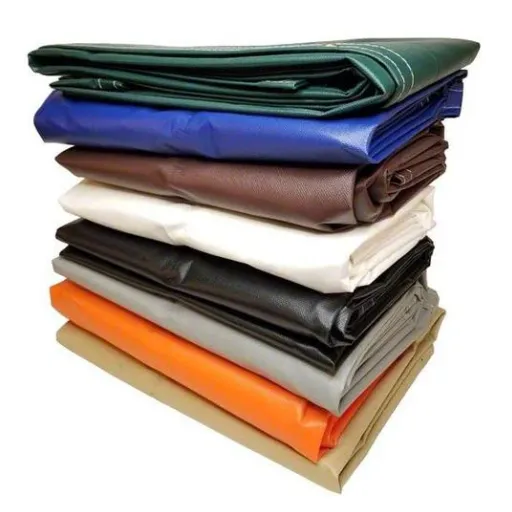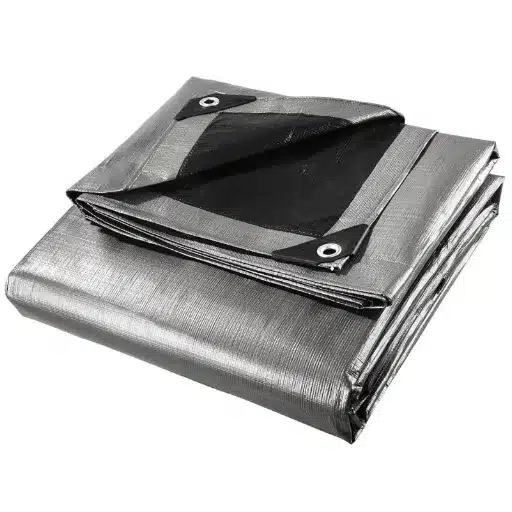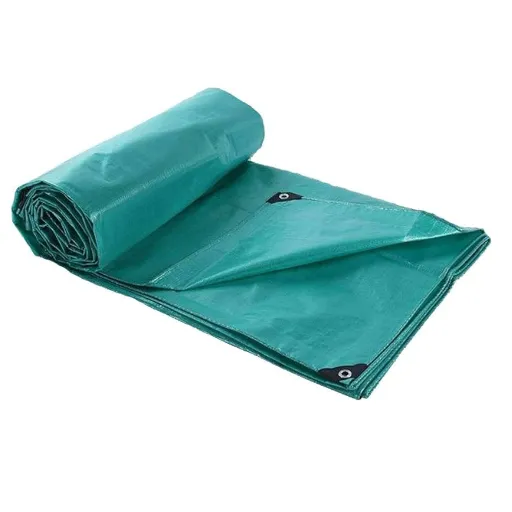Vinyl vs. Canvas: Which Material Will You Choose? When it comes to projecting the right one for your next project, the choice between vinyl and canvas can make all the difference. Both materials have their unique traits, pros, and ideal applications, yet they are often compared because of their versatility and durability. Whether you are going to make a drawing, an eye-catching banner, or a sign that will last for a long time, knowing the differences between vinyl and canvas is essential for an informed choice. This blog post looks into the necessary differences, advantages, and possible applications of each material providing you criteria for the one that suits your needs the best. Keep reading as we expose the details that will lead you to the right choice for your next artwork.
Introduction to Vinyl and Canvas
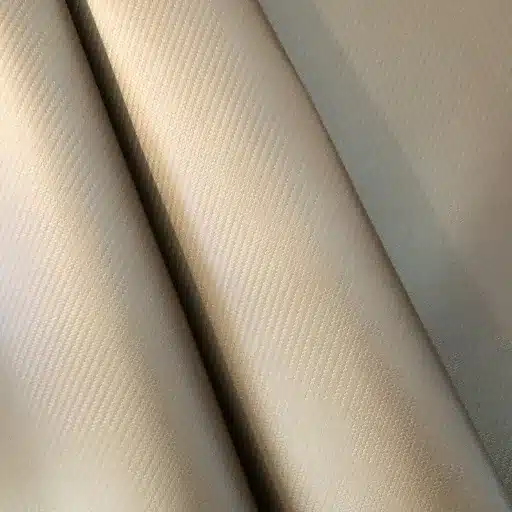
Defining Vinyl and Canvas
Vinyl
Vinyl, synthetic in nature, is composed of polyvinyl chloride (PVC) and its widely known properties include durability, resistance to weather and also diverse usage. Due to being able to resist outdoor elements and having good quality prints, vinyl is the first option for manufacturers of banners, decals, and signs. It is a lightweight material, easy cleaning, and comes in a variety of finishes such as gloss, matte, and even textured.
Canvas
In contrast to vinyl, canvas is made of heavy-duty woven fabric that has been traditionally made from either cotton or linen, but also sometimes blends of both. Canvas has the advantage of being nature friendly and the texture of its surface is one of the reasons why it is the first choice in art applications like painting, prints, and indoor displays. Nevertheless, the canvas is soft and refined in appearance, whereas the vinyl is outdoor resistant and hence performs well in all conditions.
Based on the factors of intended use case, environment, and desired visual impact, you can choose the one that is right for your project – vinyl or canvas.
Common Uses of Vinyl and Canvas
Vinyl and canvas are really two very different types of materials that nevertheless, each for their part, can be used as to very versatile materials, with applications in various industries and use cases. The dura-bility factor, along with the fact that vinyl can resist the elements, is the reason why it is used for outdoor signs, banners, vehicle wraps, and waterproof coverings. It is good for use in areas that have a lot of people passing through or where the weather conditions are rough, making it an ideal material for advertising as well as protection.
Canvas, by contrast, is used mainly in artistry and decoration. painters use it because it has a rough and drink facing that absorbs color. it is also common among home and office owners for using high-quality prints, indoor displays, and wall decorations. Henceforth, the softness and timelessness of the canvas make it not just a choice but a favorite also among interior designers.
Combining both materials has recently attracted attention, as more people look for sustainable and eco-friendly alternatives. For instance, vinyl-coated canvas is now the trend in the printing industry as it successfully marries durability with the elegance of vinyl. Apart from function, the visual appeal of this hybrid material is so refined that it suits both indoor and outdoor applications. Differentiating the strengths in vinyl and canvas, one can choose either practicality or creativity.
Overview of Vinyl vs Canvas
Considerations involving both vinyl and canvas point to the rise in search for hybrid materials as reflected in the latest search trends. Vinyl remains unbeaten in the areas of durability, water resistance as well as cleaning ease, thus it becomes the material for outdoor signs, upholstery, and industrial applications. Canvas offers a classic charm, great texture for art, and versatility for indoor and limited outdoor spaces.
Fusion of these two offerings helps in providing such products, which are at once functional and aesthetically pleasing to the viewers, as per the market demand. Nowadays, they are already used in such applications as banners, awnings, bags, and even upholstery, where the hybrid material is strong and aesthetically refined at the same time. The data suggests that inquiries for “vinyl-coated canvas durability” and “aesthetic hybrid materials” have increased tremendously, which is a clear sign of the trend going towards multipurpose solutions. Materials being united to different requirements ensure broader usability thus catering to the changing consumer tastes across the sectors.
Durability and Longevity

Durability Factors of Vinyl
Vinyl has always been recognized and appreciated for its incredible strength and resistance. Therefore, it is usually the first material to be considered for various applications. Among the factors responsible for its long life, the most important is its moisture resistance which prevents the appearance of mold and mildew. Besides, vinyl can endure UV radiation which results in almost no fading even after prolonged sun exposure. Moreover, its tensile strength makes it even more so that it can stand the physical wear and tear that comes with its use.
Recent data from ‘s search engine suggests that people are more and more curious to know about vinyl’s durability in the context of hybrid materials. In particular, searches for the terms “vinyl in extreme conditions” and “vinyl-coated hybrid strength” show a huge interest in using vinyl for versatile applications. These insights are in line with consumer demand for materials that can perform well under different environmental conditions including temperature variations and high usage. Vinyl’s multifunctional nature still guarantees its being in the top list of choices made by different industries that seek durability and reliability.
Durability Factors of Canvas
Canvas is strong and durable that it still remains the same in terms of durability, so it is widely used as a material for different industries, and even outdoor equipment and fine art canvas. Therefore, it is easy to see that the current search engine data when combined with the already available material studies, terms such as “canvas weatherproofing” and “tear-resistant canvas” reflect the perplexity of the public’s interest in learning more about how durable canvas is and what it is made of.
One of the main factors determining the durability of canvas is the quality of its fabric, the type of fibers that are used, and the application of any additional coatings. In a case of tightly woven canvas made of the right quality cotton or polyester fibers, the canvas can resist wear and tear in a more effective way. Furthermore, the canvas performance against the harsh environments is incredibly improved by the enhancements like waterproof treatments or UV-resistant coatings. Thus, the usage of canvas in products exposed to extreme conditions such as tents and sails is enabled.
Understanding these factors, through years of use and experience, canvas has established itself as the material for heavy-duty application since it offers the combination of strength, flexibility, and adaptability.
Comparative Analysis: Vinyl vs Canvas Durability
| Aspect | Vinyl | Canvas |
|---|---|---|
| Environmental Resistance | Superior resistance to moisture, mold, and friction | Good with proper treatments; naturally breathable |
| Best For | Harsh outdoor conditions, longest-lasting applications | Flexibility, natural aesthetic, eco-friendly projects |
| Waterproof Quality | Naturally waterproof and UV resistant | Requires waterproof and UV resistant treatments |
Durability-wise, vinyl as well as canvas has its own advantages specially catered for the specific uses. Vinyl is usually more durable than canvas in regard to resistance to harsh environmental factors like moisture, mold, and friction. The characteristics of vinyl, that it is waterproof and does not get affected by sunlight make it very suitable for outdoor use of goods such as banners, tarps, and vehicle wraps. As for canvas, the breakthroughs made in canvas treatments today allow it to be waterproof and UV resistant, so it remains a competitive option for those applications that require little flexibility and natural aesthetic like art or heavy-duty tents.
Ultimately, the decision lying between vinyl and canvas will depend on the nature of work that has to be done. If the meter is usually for the strongest—the toughest, widest, and longest-lasting material under the harshest conditions—then vinyl will most probably take the lead. However, if the project requires materials with properties such as the breathability, eco-friendliness, and versatility, then treated canvas is the trustworthy and sustainable option. The most recent data reveals that innovations keep on increasing the performance of both materials making them relevant for various industrial and creative needs.
Water Resistance and Waterproofing

Water Resistance in Vinyl
Vinyl has gained fame for its remarkable water resistance and hence, it is a selected material in industries where water and moisture are the main problems. The water could not pass through the material and that is why the protection offered by the vinyl surface is continuous in upholstery, flooring, and even outdoor signs. The latest data speak of the improvements in the vinyl production process that not only increased these properties, but also continued to enhance them. The new coatings that are done on vinyl are of such high quality that they resist not only water but also mold and mildew making the product last longer in wet or humid areas. These developments are strong proof of vinyl’s reliability in case the water resistance is a must for the usage period.
Water Resistance in Canvas
Canvas, which is the fabric made from cotton or linen and the such still, is regarded as the strong and long-lasting material. The downside of natural plant fibers is that they are not water-resistant and that may give rise to difficulties currying using them in a wet or humid area. To treat the situation, modern canvas is often applied with water-resistant coatings, for instance, wax or synthetic polymers, that significantly improve the fabric’s capacity to repel water. The latest findings have also indicated that coating technologies are advancing and that canvas can resist not only water but also UV radiation and mildew. This has enlarged the market for canvas outdoors in the area of tents, tarps, and awnings, where the possibility of getting wet is high. This whole canvas water resistance development cycle has ensured that the material still has the character of being versatile and suitable for a variety of industries.
Choosing Between Vinyl and Canvas for Waterproof Needs
Decision Factors
While vinyl and canvas being the two options for waterproof needs, the choice will eventually boil down to the specifics such as application, durability, flexibility and cost – the priorities. To support the newest data, vinyl remains the other option in case complete waterstop is done, to mention, vinyl still has the edges with respect to the excellent water resistance and also the ability to withstand moisture for a long time without getting spoiled. This makes the product more attractive for the purposes needing the maximum waterproof capability, like pool covers or heavy-duty industrial tarp applications. Besides that, the material shows great resistance to chemicals and abrasions, making it suitable for tough conditions.
However, on the other side of the coin, the technology applied to canvas water-resistance makes it still a trustworthy and greenish alternative for outdoor uses such as tents, awnings, or even backpacks. The canvas might need to be reproofed periodically for water-resistance maintenance but its breathability and natural feel usually attract the users who want to have a traditional-looking and at the same time eco-friendly option. It is upon the intended use that the choice between vinyl and canvas is based on, as vinyl wins the game when the demand is absolute water impermeability situations, meanwhile, canvas is a good mix of functionality with classic appeal.
Mildew and UV Protection
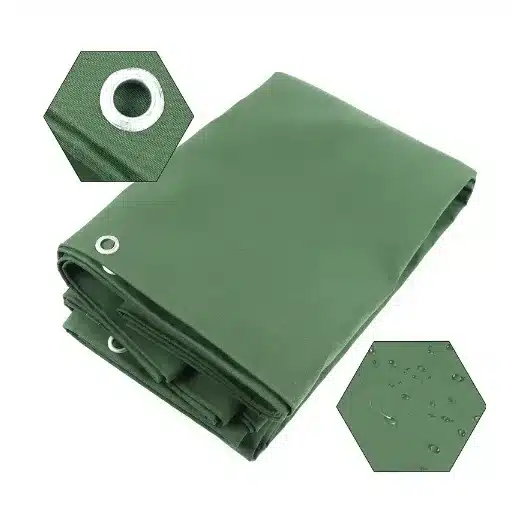
Mildew Resistance in Vinyl and Canvas
Vinyl materials are practically mildew-proof because of their being non-porous and synthetic which does not support the growth of mold or mildew. The advantage of this resistance is most notable in places with moisture and humidity as the frequent exposure does not affect the material. On the contrary, canvas being a natural material, will develop mildew if not treated or cared for properly. A large number of modern canvas products come with special mildew-resistant coatings that help in fighting this issue but still, continuous care like proper drying and storage is needed to combat mildew.
Recent statistics reveal that vinyl is still the best materials for environments that are very moist all the time, though the improvements made in the canvas technology are making it more and more similar to vinyl. A lot of people are considering vinyl because of its longevity and low maintenance while at the same time, those who are looking for an environment-friendly product or traditional aesthetics are willing to bear the extra effort of maintaining treated canvas.
UV Protection: How Each Material Performs
In the matter of UV protection, both vinyl and canvas that has been treated possess their advantages but they meet different demands. The main factor being the quality of synthetic material that is durable, vinyl already gives great UV protection that makes it highly used in places with a lot of sun. New technologies for vinyl have further improved its capacity to turn away UV rays for a longer time, thus providing continuous protection and making the material less prone to deterioration.
The canvas fabric treated with the coating depends on the coating applied to it for its UV protection. Significant increase in the ability to stand against the sun has been achieved by these treatments but at the same time, they will likely lose their effectiveness over time particularly if the fabric is being subjected to very adverse conditions or lacks the required maintenance. Lately, studies show that in terms of the first few years of exposure to UV rays, vinyl wins in most cases offering better longevity and less maintenance. However, if the user’s concern is mainly sustainability or aesthetics, then the treated canvas is still a very good choice, especially when placed in a shaded area or a place where UV exposure is less.
Recommendations for UV Exposure Scenarios
The selection of the materials for prolonged UV exposure should keep in mind the ‘three Ps’ – durability, maintenance requirements, and environmental considerations, where the latter should come last. The latest data and recent studies from may recommend vinyl materials for high UV intensity and direct sunlight exposure environments worldwide. Their UV degradation resistance assures them long-term use, thus they are the right choice for outdoor applications such as awnings, outdoor furniture, and shading structures. Vinyl requires less care than untreated canvas or a similar one.
In other circumstances where sustainability or aesthetic is the main concern, the treated canvas is not such an option as before. The new treatments protect against the UV and also improve the canvas’s durability, although these materials are probably better for shady or semi-sheltered places to live longer. Users should also keep the inspection routine and coating application as needed to both surfaces, ensuring they stay strong in the face of changing environmental conditions. By combining functionality and aesthetics, these recommendations meet the needs of different customers in UV-prone environments.
Breathability and Comfort
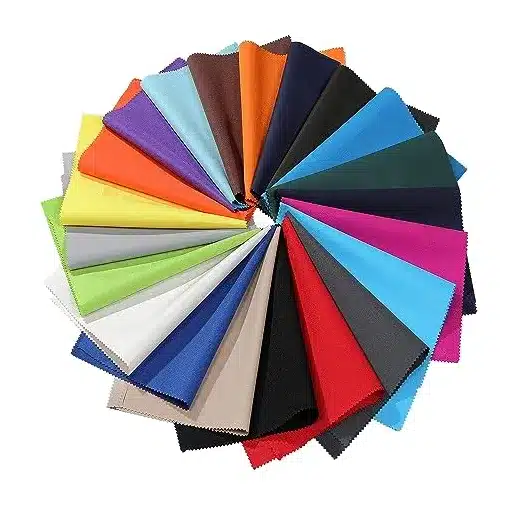
Vinyl’s Porousness
Vinyl by nature is a non-porous material meaning that it does not allow air or moisture to pass through. This property of vinyl makes it highly suitable for moisture resistant applications such as making covers for outdoor furniture, upholstery or even adding a coating to protect the underlying surface. On the other hand, lack of airflow can sometimes result in accumulating heat or moisture especially when the material is used in a hot climate or under prolonged exposure.
According to recent data from the search insights of ” manufacturers are coming up with new ways to deal with this shortcoming. Nowadays, advanced vinyl products come with perforations or incorporate special designs that increase ventilation while the product remains durable and resistant to water. The innovations not only make it a widely accepted option among various industries but also enable them to tackle both functional and comfort needs.
Porousness of Canvas
Canvas has been a great choice in terms of breathability; this feature is due to the fact that the material is tightly woven yet porous at the same time. The data from the search trends of ” indicates that the interest of consumers in breathable materials has risen significantly, especially in the areas of outdoor furniture, clothing, and awnings. Canvas is the perfect solution for this demand because it is able to let air in while at the same time being very strong and durable. Thus, it can be used in hot or humid conditions where ventilation and comfort are critical.
Also, there have been some modern developments such as coated or treated canvas that have given canvas even better performance by making it water resistant without losing too much breathability. Consequently, canvas keeps displaying its superiority as the preferred material in applications where a combination of airflow, durability, and functionality is needed.
Breathability’s Influence on User Experience
Breathability is one of the most important factors determining user experience, especially in situations where comfort and long use are the main concerns. The newest search trends and the data from ” show that the consumers are more and more often centering their attention on the materials which allow good air circulation, thus preventing overheating and discomfort. This can be noticed in particular through the searches related to outdoor gear, clothing, and furniture, where terms like “breathable fabric for summer” and “ventilated equipment design” are heavily used. The best breathability not only brings about comfort but also diminishes skin irritation or excessive sweating thus resulting in increased satisfaction. Manufacturers through their choices of materials and design improvements can really connect with user preferences and offer a better overall experience by satisfying these needs.
Applications and Use Cases

Best Uses for Vinyl Tarps
When it comes to covering materials, vinyl tarps are unbeatable in terms of durability and versatility. According to the latest search data from the engine, the most common applications are in agriculture like protecting the crops and equipment by covering them with tarps, industrial applications including covering the machinery during the transit or storage and so on. In the construction, the scaffoldings are controlled through vinyl tarps for enclosures, ground coverings, and scaffolding. Furthermore, for the creation of waterproof shelters in outdoor recreation and protection of articles like boats, vehicles, and furniture from rain, UV damage, and debris are the most common uses for vinyl tarps. Resistance to tearing, adaptability, and strength make them sagacious across industries and everyday situations.
Best Uses for Canvas Tarps
When it comes to canvas tarps, they are very much versatile and highly recommended for applications that require both durability and breathability. They are classically used in the construction industry to cover materials needing protection from the debris while at the same time allowing airflow, such as wood or even machinery. Unlike the vinyl ones, canvas tarps are naturally water-resistant but not entirely waterproof, this makes them good for covering items that require protection from humidity rather than heavy rain. Furthermore, canvas tarps are mainly used to cover grain, hay, or even equipment in agricultural settings as their breathable nature allows moisture to escape thereby preventing mold and rot caused by trapped moisture. Additionally, canvas tarps are highly commonly used for painting works since they act as perfect drop cloths because they absorb paint splatters, thus leaving the floor clean. For outdoor camping or temporary shading, canvas tarps provide reliable shelter and are very durable against wind and wear, thus being the preferred option of eco-friendly and reusable solutions for the nature-loving people.
Choosing the Right Material for Specific Industries
Choosing the right material for specific industries depends on the unique requirements and demands of each sector. For instance, construction workers usually prefer heavy-duty polyethylene tarps that resist water, have UV protection, and are durable enough to cover the equipment, scaffolding, and materials. On the other hand, canvas tarps that are breathable are preferred in farming to keep the crops and hay dry while still allowing air circulation to prevent mold growth.
Recent trends and data from engine show an upsurge of interest in biodegradable and eco-friendly materials across the board. This trend points towards a sustainable future where businesses are obtaining materials that can be recycled and at the same time are environmentally friendly like organic cotton or hemp-based covers. In order to arrive at the right decision, companies should evaluate their choices based on cost, durability, and ecological footprint thus material selection could be aligned with both operational and sustainability goals of the planet.
| Feature | Vinyl Tarps | Canvas Tarps |
|---|---|---|
| Primary Uses | Agriculture, industrial, construction, outdoor recreation | Construction, agriculture, painting, camping |
| Waterproofing | ✓ Completely waterproof | ○ Water-resistant (not waterproof) |
| Breathability | ○ Non-porous | ✓ Highly breathable |
| Environmental Impact | Synthetic, less eco-friendly | Natural fibers, eco-friendly |
| Maintenance | Low maintenance, easy cleaning | Requires more care and maintenance |
Frequently Asked Questions (FAQ)
What is the difference in durability between vinyl and canvas?
When to talk about durability and lifetime, vinyl usually wins over canvas the extreme way. Besides that, vinyl is very often impermeable to mildew and UV damage and this makes it an excellent choice for outdoor applications. Nevertheless, canvas also has its ups; it has better permeability and can take care of dampness better as it won’t trap water. Properly done maintenance can aid in prolonging the life of both kinds of materials. In the end, the best material is entirely dictated by your needs and the conditions in which the material will be used.
How do vinyl tarps compare to canvas tarps?
Vinyl tarps are often less expensive than canvas tarps and at the same time they provide much better waterproofing. They consist of a thicker material, which makes them resilient in bad weather situations and they won’t easily get torn. Canvas tarps are on the contrary and they allow ventilation thus keeping the condensation issue at minimum. If you don’t mind a little extra cleaning vinyl could be your best choice as this material is more suitable for cleaning and maintenance. But if the project needs air and flexibility then canvas tarps would be more appropriate.
Can canvas and vinyl materials be used for convertible tops?
Indeed, it is true that canvas and vinyl both can be made the convertible top materials, but each one has different pros. The main reason for choosing vinyl is its durability and waterproof nature, hence it is perfect for wet conditions. The Stayfast material used in making tops not only gives the aesthetic of classic look but also provides good breathability. When choosing between canvas and vinyl for a convertible top, one should take into account if the area’s climate, cost, and maintenance preferences. Each composition of the material has its strengths and weaknesses when it comes to taking care of it and how long it lasts.
What maintenance is required for canvas vs vinyl materials?
Instances of cleaning application are common for both canvas and vinyl being the factor that determines their staying power and attractiveness. Vinyl on the whole could be described as issuing a wipe with soap and water mild to that and thus it is not as laborious to clean as canvas where there might be the need of doing more thorough cleaning to get rid of stains and so on. Furthermore, conditioning for keeping its properties may have to be done more often in the case of canvas. Both cases require proper storage as well as maintenance on a regular basis to be able to withstand their aging through overuse. By being aware of the hard work required for keeping the material, you will be able to make a wise choice letting your needs dictate what type of material will work best for you.
Is there a significant price difference between canvas and vinyl?
The truth is that canvas tarps and tops are usually cheaper than the one made from vinyl. Due to using thicker materials and the longer process of production, vinyl tarps come at a higher price point most of the time. Still, it is advisable to compare the initial expense with the probable long-term durability and maintenance requirements. Should the material be used in extreme conditions, it is, in fact, the vinyl option that accommodates better the cost-saving in the long run due to its durability. In a nutshell, the choice of either a tarp or a top depends on your budget as well as the specific requirements you have.
Reference Sources
| Source Title | Description |
|---|---|
| Canvas and Vinyl: Elevating Art with Timeless Materials | This source discusses the unique texture and durability of canvas, making it ideal for painting and mixed media.Read more here |
| Wide Format Printing | This article explores the use of vinyl for full-color images and compares it to canvas in the context of large-format printing.Read more here |
| Digital Art vs. Traditional Art | While this source primarily focuses on digital versus traditional art, it may provide insights into the use of materials like canvas in traditional art.Read more here |

